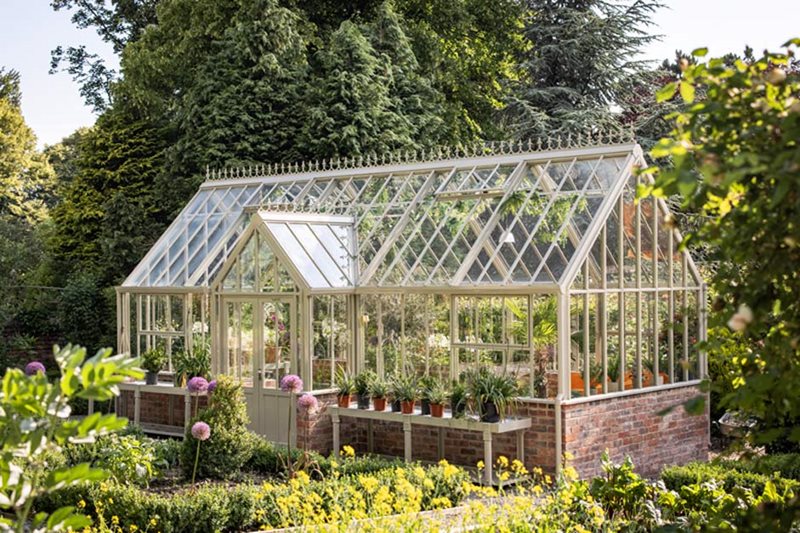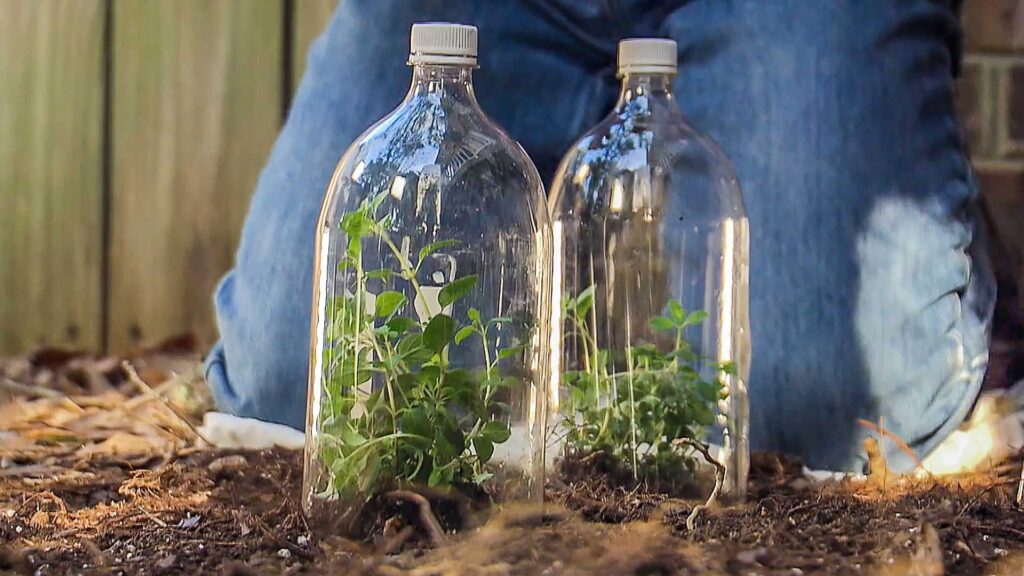Greenhouse structure types come in different styles to fit different gardening needs. Traditional ones have a strong frame and clear walls for lots of sunlight. Hoop houses are budget-friendly with a curved shape, great for seasonal plants. Gothic arch greenhouses look nice and work well. Quonset greenhouses are kind of like a half-circle, helping airflow. Lean-to greenhouses use existing structures, saving space. Pole barn greenhouses are big and versatile.
However, picking the right type depends on things like your climate, what you’re growing, and your budget. Think about your gardening goals, get advice, and plan for the future to choose the best greenhouse structure for you.
What Defines Greenhouse Structures and what Are the Function of It?

A greenhouse structure is a controlled environment designed for the cultivation of plants. It is constructed with transparent or translucent materials, allowing sunlight to enter while trapping heat to create a warm and stable climate conducive to plant growth.
Functions
Temperature Regulation: Greenhouses provide a regulated temperature, protecting plants from extreme weather conditions, especially during colder seasons.
Humidity Control: The enclosed space allows for better control over humidity levels, crucial for certain plant varieties.
Light Management: The transparent materials permit sunlight to enter, and various coverings may be used to diffuse or redirect light, optimizing plant exposure.
Protection from Pests and Diseases: The controlled environment helps prevent infestations and diseases, reducing the need for pesticides.
Extended Growing Seasons: Greenhouses enable year-round cultivation, allowing farmers to grow crops outside their typical seasons.
Increased Crop Yield and Quality: By creating an optimal environment, greenhouses contribute to higher yields and improved crop quality.
Which Factors Should Be Considered When Choosing a Greenhouse Structure?
Material Selection
Glass: Known for its excellent light transmission, but it can be heavy and expensive. Glass provides durability and is an ideal choice for long-term investments.
Polycarbonate: Offers a balance between insulation and weight. It is durable, provides good light diffusion, and is more cost-effective than glass.
Polyethylene: A cost-effective option, but it may have a shorter lifespan. Polyethylene provides good insulation but requires careful maintenance.
Design and Size
Quonset: Characterized by a semi-circular design, Quonset greenhouses are space-efficient and offer good structural strength.
Gable: Resembling traditional house structures, gable greenhouses provide more vertical space. They are suitable for taller plants and trees.
Lean-to: These greenhouses are attached to existing structures, minimizing construction costs and utilizing space effectively.
Ventilation and Cooling Systems
Roof Vents: Essential for allowing hot air to escape and preventing overheating.
Side Vents: Enhance airflow and contribute to effective humidity control.
Cooling Systems: Consider additional features such as fans, shade cloths, and evaporative cooling systems to maintain optimal temperatures during warmer periods.
Automation and Technology
Automated Irrigation: Ensures consistent and efficient watering, preventing under or over-watering issues.
Climate Control Systems: Implementing automated systems for monitoring and adjusting temperature, humidity, and other environmental factors.
Lighting Systems: Consider supplemental lighting for periods of low sunlight, such as cloudy days or extended winter nights.
Climate and Location
Cold Climates: In colder regions, insulation becomes a critical factor. Greenhouses should be designed to retain heat efficiently, and additional heating systems may be necessary to protect plants from frost.
Hot Climates: Effective ventilation is crucial in warmer climates to prevent overheating. Choosing materials that offer good heat dissipation and incorporating shade systems can help manage high temperatures.
Sunlight Availability
High-Latitude Regions: In areas with limited sunlight during certain seasons, it’s important to implement efficient light management strategies. This may include using reflective materials, optimizing the greenhouse orientation, and incorporating supplemental lighting systems.
Tropical Regions: While sunlight is abundant in tropical regions, shading may be necessary to prevent excessive heat and sunlight exposure. Shade systems or materials can help regulate light levels and protect plants from harsh sunlight.
What Are The Types of Greenhouse Structures?
1. Traditional Greenhouses
Traditional greenhouses often feature frames made of durable materials like aluminum or galvanized steel, ensuring stability.
Transparent walls can be glazed with materials such as single or double-layered glass, polycarbonate, or acrylic, balancing insulation and light transmission.
Also, many traditional greenhouses are equipped with manual or automated ventilation systems to regulate temperature and humidity.
Advantages
Optimal Growing Conditions: The transparent walls allow for maximum sunlight exposure, creating ideal conditions for plant growth.
Durability and Longevity: Sturdy construction materials contribute to the long-term durability of traditional greenhouses.
Versatility: Suited for a wide range of crops, making them ideal for horticulturists with diverse planting needs.
Disadvantages:
Higher Initial Cost: The upfront cost of traditional greenhouses is generally higher due to the quality materials used.
Space Requirements: Being permanent structures, they may require more space, limiting their feasibility in smaller or crowded areas.
2. Hoop Houses
Hoop houses have a straightforward curved frame, often made of galvanized steel or PVC pipes.
Polyethylene Covering: The structure is covered with a single or double layer of polyethylene plastic, providing cost-effective insulation.
Pros and Cons
Hoop houses are a cost-effective option for seasonal cultivation and can be a practical choice for those on a budget. They are relatively easy to assemble and disassemble, offering flexibility in terms of relocation or expansion. The design may offer less insulation, making them more suitable for temperate climates.
3. Gothic Arch Greenhouses
The distinctive curved design of Gothic arch greenhouses adds an aesthetic element to functional gardening.
The arched structure aids in shedding snow, preventing excessive accumulation. The design provides ample headroom, accommodating taller plants and improving overall accessibility.
Limitations
Construction Complexity: The unique design may involve more complex construction processes compared to simpler structures.
Space Efficiency: While visually appealing, the curved design may be less space-efficient in certain layouts.
4. Quonset Greenhouses

Quonset greenhouses feature a semi-circular shape resembling a half cylinder. Commonly constructed with galvanized steel, providing strength and corrosion resistance.
Suitability for Different Crops
Versatility: Quonset greenhouses are versatile, accommodating various crops, especially those with flexible space requirements.
Air Circulation: The semi-circular design promotes efficient air circulation, contributing to the overall health of plants.
5. Lean-To Greenhouses
Lean-to greenhouses are attached to existing structures like houses or barns, utilizing a shared wall. This design optimizes space and can provide convenient access to utilities from the existing structure.
Advantages and Considerations
Integrating with existing structures can result in cost savings during construction. Depending on the orientation, lean-to greenhouses may receive limited sunlight exposure compared to freestanding structures.
6. Pole Barn Greenhouses
Pole barn greenhouses use a frame constructed with wooden poles and may feature metal siding. The design provides a spacious interior, suitable for larger-scale cultivation or equipment storage.
Durability and Maintenance
With proper construction and maintenance, pole barn greenhouses can be durable and withstand various weather conditions.
Regular inspections are crucial to check for wear and tear on wooden components, ensuring longevity.
FAQ
What are the four basic styles of greenhouse design?
Greenhouses come in various styles, with the four basic ones being traditional, hoop houses, gothic arch, and Quonset greenhouses.
What is the best type of greenhouse?
There isn’t a one-size-fits-all answer; the best type depends on factors like climate, space, and budget, with traditional greenhouses offering versatility, and hoop houses being cost-effective.
What is a lean-to type greenhouse structure?
A lean-to greenhouse attaches to an existing structure, utilizing a shared wall. It optimizes space and provides convenient access to utilities from the connected building.
What are greenhouse structures used for?
Greenhouse structures are used to create controlled environments for plants, extending the growing season, protecting crops from adverse weather, and optimizing conditions for plant growth.
What is the purpose of a greenhouse structure?
The primary purpose of a greenhouse structure is to control and manipulate environmental factors like temperature, humidity, and light, creating an ideal and stable setting for plant cultivation.
What is the most important part of the greenhouse structure?
The glazing material, such as glass or polycarbonate, is crucial. It allows sunlight in while trapping heat, creating the greenhouse effect that is fundamental for plant growth and health.
Final words
To sum it up, picking the right greenhouse is super important for your garden. Traditional ones are strong and good for lots of plants. Hoop houses are cheaper and easy to set up. Gothic arch ones look cool, and Quonset ones are versatile. Lean-to greenhouses save space, and pole barn ones are roomy. Think about your weather, how much space you have, and your budget when choosing.
Each type has good things and not-so-good things, so pick the one that fits what you want to do with your garden. No matter if you’re just starting or already a pro gardener, these greenhouse types can help your plants grow happy and healthy all year long. Happy gardening!

